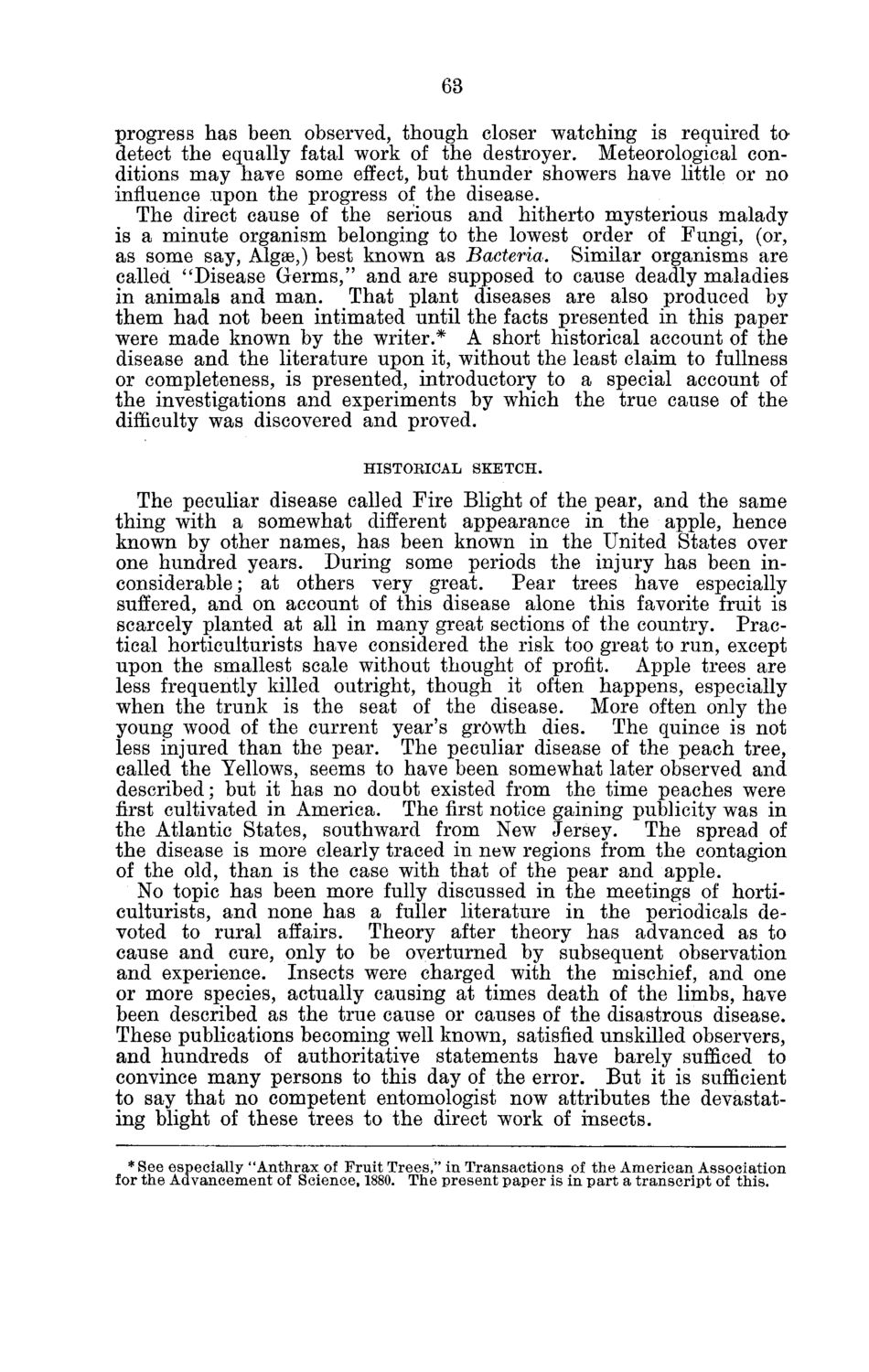| |
| |
Caption: Board of Trustees Minutes - 1880
This is a reduced-resolution page image for fast online browsing.

EXTRACTED TEXT FROM PAGE:
63 progress has been observed, though closer watching is required to detect the equally fatal work of the destroyer. Meteorological conditions may have some effect, but thunder showers have little or no influence upon the progress of the disease. The direct cause of the serious and hitherto mysterious malady is a minute organism belonging to the lowest order of Fungi, (or, as some say, Algae,) best known as Bacteria. Similar organisms are called "Disease Germs," and are supposed to cause deadly maladies in animals and man. That plant diseases are also produced by them had not been intimated until the facts presented in this paper were made known by the writer.* A short historical account of the disease and the literature upon it, without the least claim to fullness or completeness, is presented, introductory to a special account of the investigations and experiments by which the true cause of the difficulty was discovered and proved. HISTOKICAL SKETCH. The peculiar disease called Fire Blight of the pear, and the same thing with a somewhat different appearance in the apple, hence known by other names, has been known in the United States over one hundred years. During some periods the injury has been inconsiderable; at others very great. Pear trees have especially suffered, and on account of this disease alone this favorite fruit is scarcely planted at all in many great sections of the country. Practical horticulturists have considered the risk too great to run, except upon the smallest scale without thought of profit. Apple trees are less frequently killed outright, though it often happens, especially when the trunk is the seat of the disease. More often only the young wood of the current year's growth dies. The quince is not less injured than the pear. The peculiar disease of the peach tree, called the Yellows, seems to have been somewhat later observed and described; but it has no doubt existed from the time peaches were first cultivated in America. The first notice gaining publicity was in the Atlantic States, southward from New Jersey. The spread of the disease is more clearly traced in new regions from the contagion of the old, than is the case with that of the pear and apple. No topic has been more fully discussed in the meetings of horticulturists, and none has a fuller literature in the periodicals devoted to rural affairs. Theory after theory has advanced as to cause and cure, only to be overturned by subsequent observation and experience. Insects were charged with the mischief, and one or more species, actually causing at times death of the limbs, have been described as the true cause or causes of the disastrous disease. These publications becoming well known, satisfied unskilled observers, and hundreds of authoritative statements have barely sufficed to convince many persons to this day of the error. But it is sufficient to say that no competent entomologist now attributes the devastating blight of these trees to the direct work of insects. *See especially "Anthrax of Fruit Trees," in Transactions of the American Association for the Advancement of Science, 1880. The present paper is in part a transcript of this.
| |